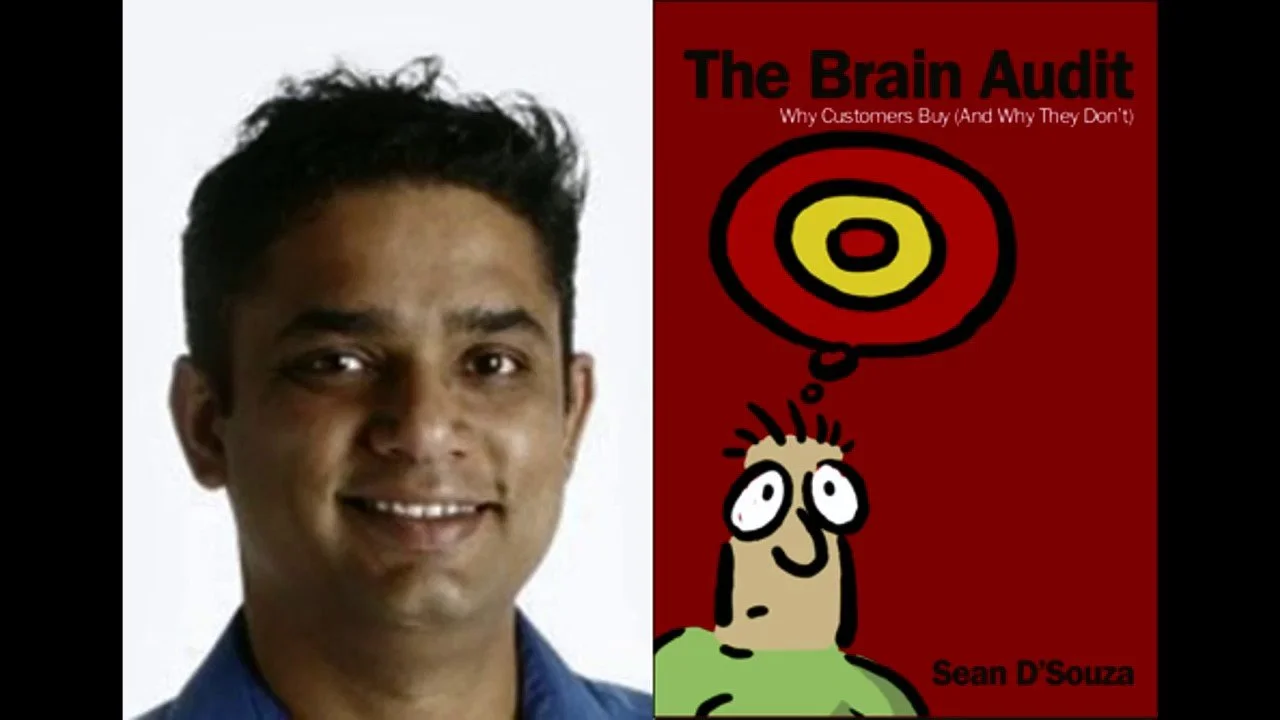Grab your luggage with these Takeaways from Sean D’Souza’s The Brain Audit
There are business books that many people seem to recommend over and over, and there are books that you know you’re going to re-read over and over.
The Brain Audit by Sean D’Souza is both.
Souza makes the case that the brain is a conveyor belt of sorts, much like the one you’d see at an airport. He says the brain processes thoughts in an orderly (rather than random) manner and his book helped me better understand the predictability of the buying cycle.
His points are consistent with what authors like Donald Miller (Building a Story Brand) preach about highlighting your customer’s problems – and how you address them – rather than pounding your chest about how great you are. But he adds a number of interesting twists.
Here are the seven bags that he says you need to take off the conveyor belt to optimize results and that you need to position them in a language the customer understands.
1. The Problem Bag
2. The Solution Bag
3. The Target Profile and Trigger
4. The Objections Bag
5. The Testimonials
6. The Risk Reversal
7. The Uniqueness
As I’ve been doing with other books that have resonated with me and many other “influencers,” here are eight takeaways. I will say there are many, many more.
You can buy the book here (Amazon affiliate link) or at your favorite independent bookstore if you prefer. It’s worth the investment.
Bag 1: The Problem: The Problem gets our instant attention. This is because our brain is always on the lookout for the problem. While solutions may or may not engage the brain, a problem always gets the brain’s attention.
Bag 2: The Solution: Your ‘solution statement’ should be the mirror image of the problem statement. If you try to be clever with the solution, you’ll confuse the customer. Avoid the temptation to bring up the ‘solution’ first. First problems, then solutions.
Bag 3: The Target Profile: Use a real person to get feedback. They are bound to tell you that one thing that they are really interested in. List all the criteria. And then get them to tell you which one of those problems is the biggest—and most frustrating of them all…When a client asks you: “What do you mean by that?” they’re actually saying, “Tell me more”.
Bag 3A: The Trigger: You shouldn’t overdo either the ‘problem’ or the ‘solution.’ Roll out too many problems, and the customer feels overwhelmed and feels unable to respond. Bring in too many solutions and the customer gets too relaxed. He/ She feels no urgency to buy your product/ service right away.
Bag 4: The Objections: The Objection is a big signal that the customer is interested. Disinterested customers don’t object or ask questions. They simply walk away…Objections are one side of the coin. And testimonials are the other side. Understanding the objections leads to an understanding of what kind of testimonials you need to have in your message.
Bag 5: The Testimonials: We should plan our testimonials to directly defuse each objection. Each of the testimonials are mirror-images of the objections. The job of testimonials is to reduce the customer’s fear of buying the product or service. They’re there to build trust. Me now: Sean makes a great case for avoiding resume-like testimonials in favor of asking writers to address the concerns they had before buying your product and I’ve already asked two people using his format.
Bag 6: The Risk Reversal: The only reason why you should be afraid of a customer asking for a refund is if you’ve got a crappy product or service. If your ‘boat’ doesn’t have holes, then the ‘sharks’ don’t matter.
Bag 7: The Uniqueness: It ain’t enough to simply create the uniqueness. You have to make sure that everyone knows. And the best way to test whether you’ve done a good job is to ask your customer if they know why you’re different. And every customer should respond in a similar manner.
If you remove all the bags from the conveyor belt, you can still lose your customers if you don’t bring out the uniqueness of your business/ product/ service. It’s important for you and your employees to know what makes you different. It gives the company/ product/ service a measure of pride and distinction. And a spotlight in an increasingly noisy market.
Again, here’s a link to buy the book if you don’t already have it. Enjoy!

